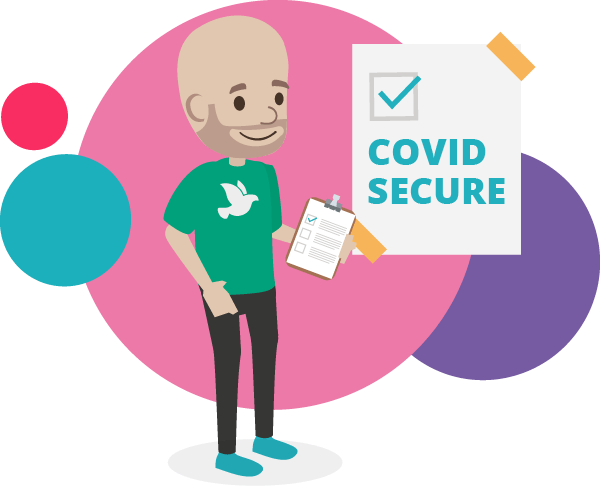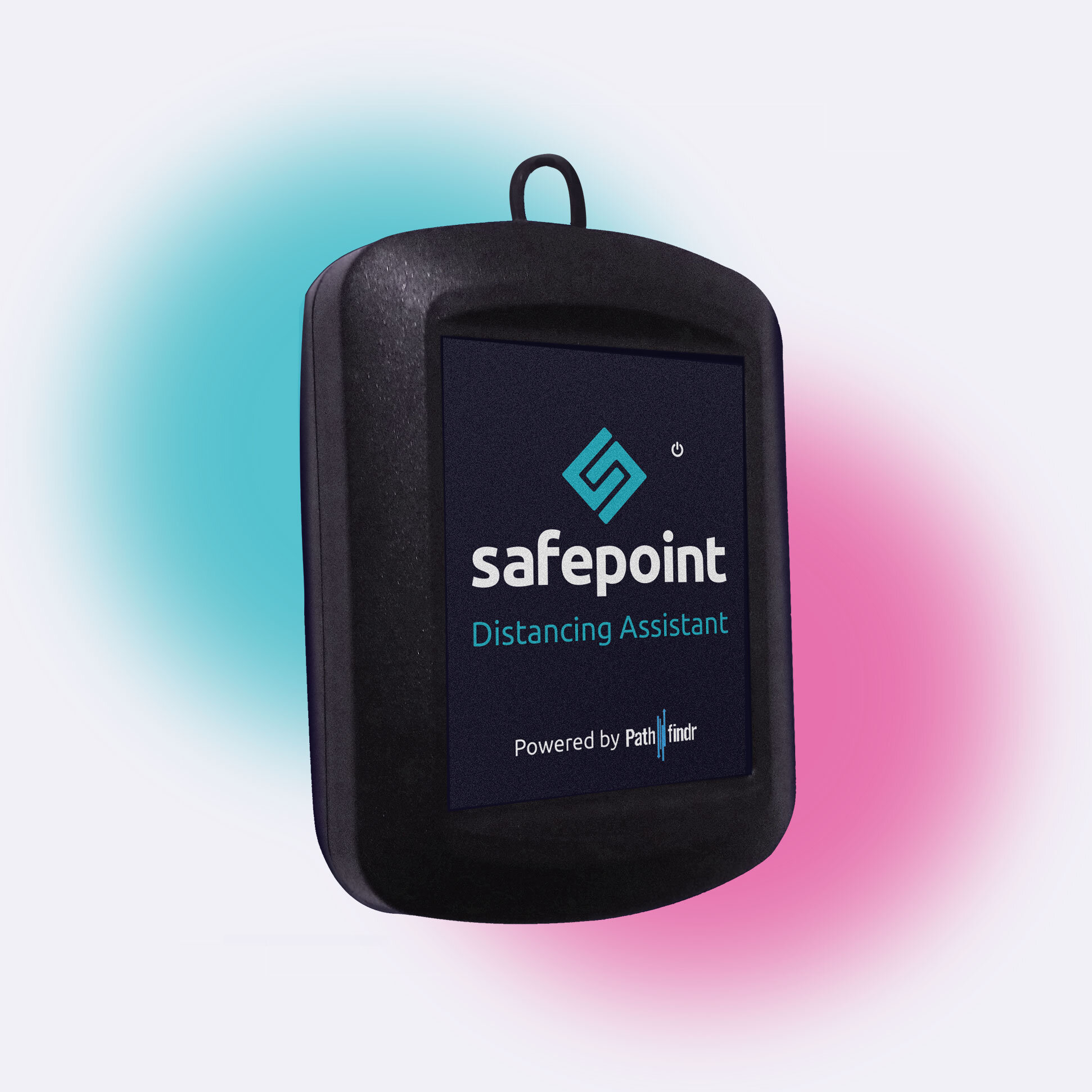Returning to work after Coronavirus lockdown ends
The UK (and the world) is in unprecedented times. With over a quarter of the British workforce being furloughed, and more people than ever working from home, many people are wondering what life will look like, when millions of people return to work.
Naturally, workers are worried about the risk of infection, and employers are worried about the safety of their staff, and the practicalities of running a business during a pandemic.
6 big questions
In this article, we will be looking at advice from the government, the health and safety executive and other trusted sources to answer six big questions on how the next few months will look, and what businesses can do right now to prepare.
#1 When will lockdown end?
After a recent government announcement, the furlough (wage subsidy) scheme is set to remain until the end of October. Though this marks a huge change from the plan to end the programme in June, it is unlikely to be extended again.
Despite this new subsidy extension, the government are keen to see a gradual return to normal. On the 13th May, Boris Johnson asked those who cannot work from home to return to work in some form. It should be noted that, whilst this is announcement was made as UK-wide policy, each nation is making their own choices about the lockdown timeline.
In England, atleast, we are already seeing a significant shift from full-lockdown –with many employees already returning to work and plans for shops and hospitality businesses set to open in June and July, respectively.
Lockdown as we know it has already come to an end, but if infection rates dramatically increase, we could likely see these measures reinstated. As for when things will go back to normal, who knows?
#2 What new obligations will businesses face?
According to government regulations, companies must assess the health and safety risks faced by their employees. If you own a business, you should have already made risk assessments, but these should always be updated as new risks emerge.
Writing a risk assessment (and if you have more than 5 employees, it has to be written) is a great thing to get ahead of. If you need to write a new risk assessment, you can find a free generator here.
In relation to COVID-19, the government states ‘you need to think about the risks [your employees] face and do everything reasonably practicable to minimise them, recognising you cannot completely eliminate the risk of COVID-19’.
This means that you need a risk assessment, it needs to reflect the new risk of Coronavirus infection, and you should look at sensible measures on how to mitigate the risk (more of that, later).
Lastly, businesses are encouraged to share their COVID risk assessment with their workforce (particularly in companies of over 50 employees). Once all possible risks have been formally considered, workplaces should display the ‘Staying COVID-19 Secure in 2020’ poster.
#3 Do businesses have to provide PPE?
According to the Health and Safety Executive, personal protective equipment must be provided by employers where there is a suitable risk. Understandably, PPE must be appropriate, fitting and effective. What’s more, workers need to be properly trained on how to use the equipment safely.
However, recent government advice has stated that ‘Workplaces should not encourage the precautionary use of extra PPE to protect against COVID-19 outside clinical settings or when responding to a suspected or confirmed case of COVID-19.’
For organisations that do require PPE to protect against a high risk of Coronavirus, ‘you must provide this PPE free of charge to workers who need it’.
In regards to face coverings, the government states that they ‘may be marginally beneficial as a precautionary measure’ and that, if employees wish to wear face masks, they should be supported by their employer.
#4 How should a business encourage social distancing in the office?
Luckily there is already a host of advice from the government on how to encourage social distancing in the workplace.
Work from home if possible. Even as restrictions are eased across the country, working from home will remain the safest option for those that can do so. Not only is the home a safer environment, having some workers stay at home will help make space for people that need to be in the office.
Remind staff to keep socially distant and to wash their hands regularly. Putting signs around the office, particularly in problem areas, will help this.
Provide additional hand washing facilities.
Find alternatives to touch-based keypads.
Space out work stations and, if helpful, mark the floor with tape so that people can easily keep two metres apart. Staff should also work side to side or facing away from each other, where possible.
Limit the amount of people allowed in smaller or more busy areas such as the lift or the kitchen.
Shift staggering – if there is still not enough space in the work environment for social distancing, consider having staff rotate when they are in the office. More information on shift staggering here.
Protect staff on their commute. Allow for more flexible work times so that your staff don’t have to muddle through rush hour traffic. You can also help staff avoid public transport by installing bike racks and changing stations.
Technological solutions – There are a range of technical solutions that could help encourage social distancing. Whilst some hi-tech offices are experimenting with thermal imaging and digital head counting, there are less systematic and intrusive solutions. For instance, wearable devices have been designed that can notify you if you’re within two metres of another person.
Listen to your staff! Your employees know better than anyone how their work areas operate and will be invaluable in setting up a safe working environment. Many staff members will have genuine concerns about returning to work, so reach out to them early and find out what would make them feel more comfortable.
#5 What if an employee gets symptoms of COVID-19?
If anyone becomes unwell with a new, continuous cough or a high temperature, they should follow the Government’s stay at home guidance. If this happens during work hours, they should go home straight away.
It is not necessary (at this time) to shut a business due to a staff member showing symptoms, but the incident should be handled seriously.
Make sure your staff know the government procedure for self-isolation in relation to coronavirus. Remind staff that they should not come in to work if they have symptoms, and that there are procedures in place regarding time off and sick pay.
#6 What if staff work outside an office?
Of course, many employees will be returning to work outside of an office. In these cases, there’s a few things to remember:
The UK government does not advise the use of medical PPE outside of care settings, even when dealing with the public. The use of face masks, however, should be supported if the worker wishes to use one.
Moving goods and packages - The World Health Organization (WHO) advises that the risk of transferring infections via commercial goods is low.
A focus on social distancing and good hand washing habits should be enforced whether in or out of the office.
To encourage social distancing, some businesses may consider having employees work by themselves rather than as part of a team. In these cases, remember that not all roles are suitable for an employee to do alone. If employees are working alone, they must follow lone working guidelines which requires specific duties of care from employers.
Check how the government’s new COVID-19 guidelines relate to your specific industry. There is advice for those who work in people’s homes (such as care workers and estate agents) or those who work outside (such as construction workers).
Our final reminder would be to talk to your staff. Appreciate that each member of your workforce may have unique concerns and make it clear you are listening to them. Remember that most employees want to work, but they want to work in an environment that protects their physical and mental wellbeing.
And that’s it (for now!). If you have found this article helpful, or if there’s more you’d like us to dive into, please leave a comment.
Help staff return to work with the Safepoint Distancing Assistant
A clever, wearable device that helps your staff practice safe distancing and discourages the spread of COVID-19.







